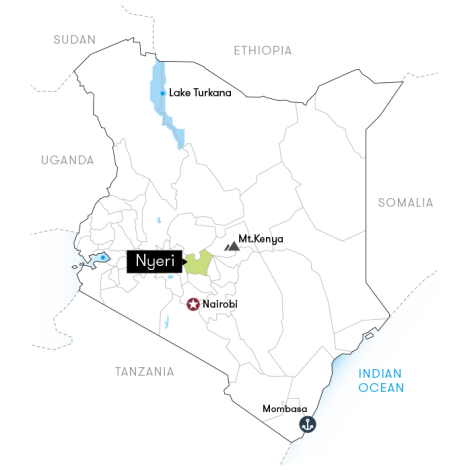Kenya- Gochatha Coffee Factory
|
(Photo Credit: covoyacoffee.com)
Tasting Notes
|
Processing
|
Elevation
|
Cultivar
|
About this Farm
(From covoyacoffee.com)
- Gachatha Coffee Factory rests on a 392-acre piece of land between the villages of Muthuaini, Thiriku, Gachenge, and Kianjau. It was started in 1963 by the Gachatha Farmers’ Co-operative Society. Its current members stand at 1,542. The factory treats all water in soak pits to ensure no contaminates run into the local waterways, which are a source for drinking water. The community also places great importance on protecting the indigenous trees that remain in the area, so that the local bird life can be sustained.
- It seems likely that coffee grew wild within the region that would become Kenya, buried deep inside impenetrable forests, or perhaps hiding in plain site; but it wasn’t until 1895 that missionaries both protestant and catholic attempted to grow coffee for commercial purposes. The 100 seeds from Reunion Island that would serve as progenitors to the Kenyan coffee industry arrived on a train, carried by priests belonging to an order known as “Holy Ghost Fathers.” On August 12th, 1899, they arrived at the spot that would quickly become the country’s capital city. One of the early protestant medical missionaries was Dr. Henry Scott. After his death in 1911, a new hospital complex was named after Dr. Scott and when the department of agriculture took over the complex in 1923 they kept the name: Scott Agricultural Laboratories, or “Scott Labs.” This is the origin of the “SL” in SL28 and other coffee varieties selected at the lab.
How to Brew this Coffee
- Use our brew guides for help dialing your coffee in with virtually any brew method here!
What is a "Washed Processed" Coffee?
(This video is of coffee grown in Peru, but the processing remains almost the same in every coffee growing region)
What's all that info on the bag mean?
From seed to cup
- Here's a short video on how coffee comes from the farmers all over the world to your cup!
